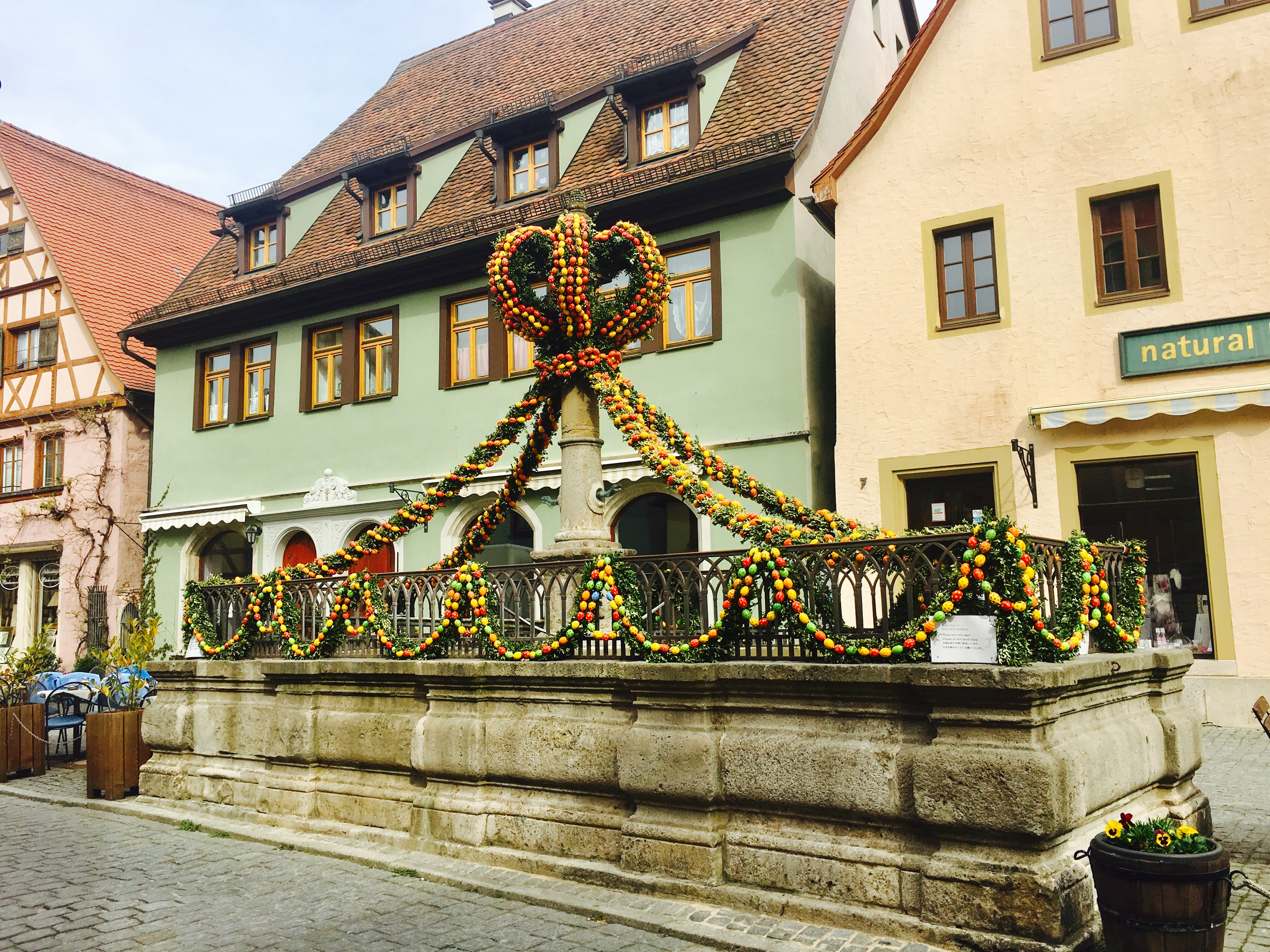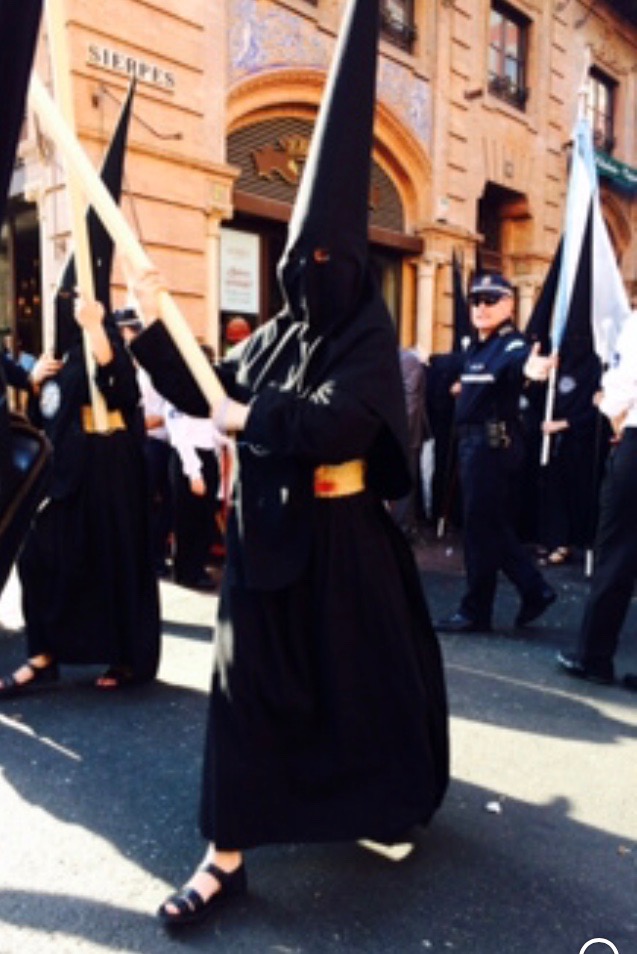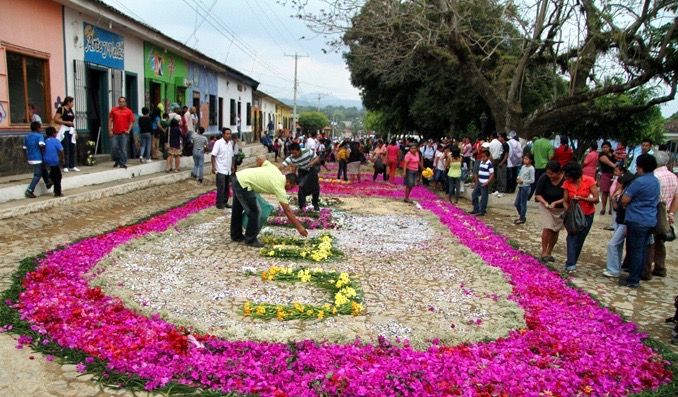
FEATURE — I’m sitting in my room on the second floor of a quaint and creaky hotel in Rothenburg ob der Tauber, Germany, happily exhausted from a day of walking history – history infused with Easter.

History, it seems, is lurking around every corner in this medieval town that survived both the Thirty Years’ War and an Allied bombing towards the end of WWII.
Easter is also lurking around here this time of year – not necessarily in the churches, which for the most part are museums, but on the stone fountains throughout town. You see, every fountain is decorated with thick garlands made almost entirely of eggs.
Easter eggs to be precise. Hundreds of carefully blown out and intricately decorated eggs. And it’s absolutely lovely.
Traveling to other Christian countries around Easter is quite the singular experience. My family and I have somewhat accidentally done it three times in the last six years. First, there was El Salvador. Then, Spain. And now Germany. Each at Easter. Each something special.
And each something very different from how we celebrate in the States.

Easter at home means going to our regular church service. It also means a ham dinner with orange rolls and green beans – maybe out on the patio if it’s warm enough.
Easter at home means an egg hunt in the big, grassy backyard at my in-laws. All the grandkids participate, lining up youngest to oldest at the start, and someone usually ends up crying.
But in El Salvador and Spain, and much of the rest of the world, Easter means none of those things.
In El Salvador, it means locals transform their cobble-stoned streets the week before Easter into scenes of Christ and the crucifixion with colored sawdust, flower petals and ferns. These works of art, called tapetes de aserrín, are painstakingly created by shifts of hundreds of people over hundreds of hours under the hot, baking sun.
We were in the mountain town of Apaneca in 2011 and witnessed the creations take shape. Those not creating, like us, passed the time eating carved papaya on sticks and ice cream out of the refrigerated vendor carts that flanked the streets.
Then, on Easter Eve, we watched the local men take turns carrying a solid wooden float of Jesus up and down the streets to the church at the center of town, their shuffling feet and the heavy load destroying the tapetes de aserrín as they went.

In Spain, Easter means city streets are shut down to everything but foot traffic for an entire week as Semana Santa processions snake in every direction. Different “Brotherhoods” in matching brightly colored religious robes with pointed hats promenade along assigned routes to their specific church somewhere in the city.
Back in 2014 when we were in Seville processions filled the streets day and night. So also did candle wax, incense, sweat, drums and trumpets. It was a fully sensory experience. Especially at night when the processions involved carrying heavy wooden floats of Christ, similar to the ones we saw in El Salvador.
And especially when I ran into a man who had just emerged from his shift under such a wooden float. He was shaking and drenched with sweat – and when he accidentally pressed up against me, so was I.
I’ve tried to forget the pungent odor that accompanied the sweaty parishioner in Seville that Semana Santa without much success. But that’s OK bcause I can’t really forget any of the other elements either … or likely the ones in Germany today.
But for the people who participate in these traditions, that is the point: to not forget. And maybe they will also attract visitors, like me, who gladly come – if even by accident.

Kat Dayton is a columnist for St. George News, any opinions given are her own and not representative of St. George News.
Email: [email protected] | [email protected]
Twitter: @STGnews
Copyright St. George News, SaintGeorgeUtah.com LLC, 2017, all rights reserved.